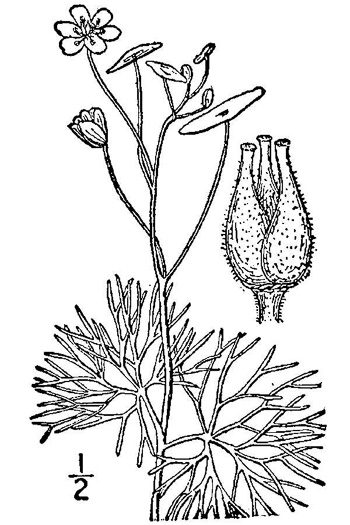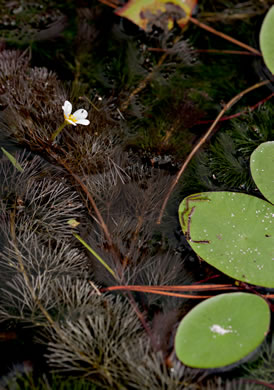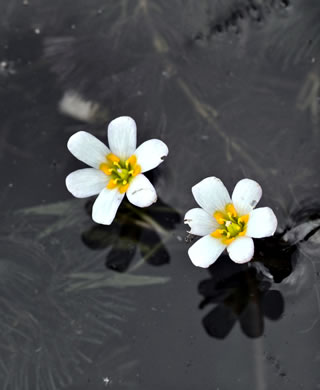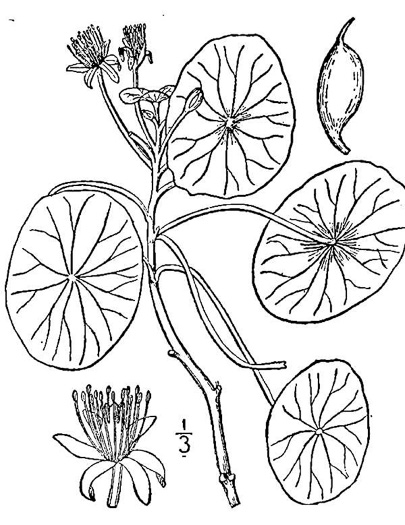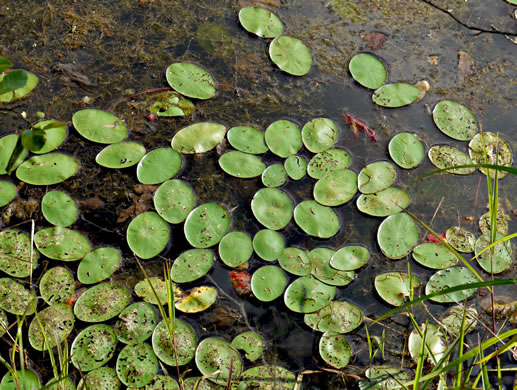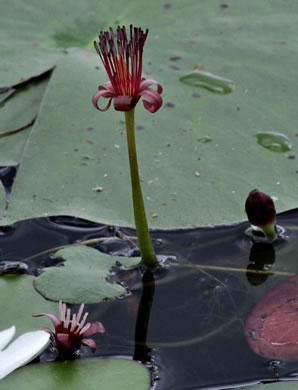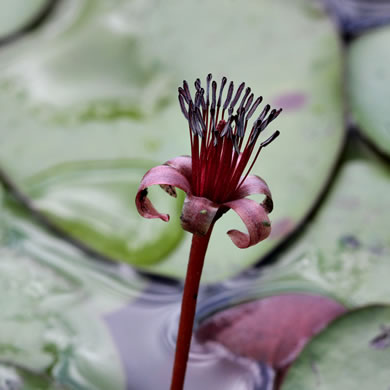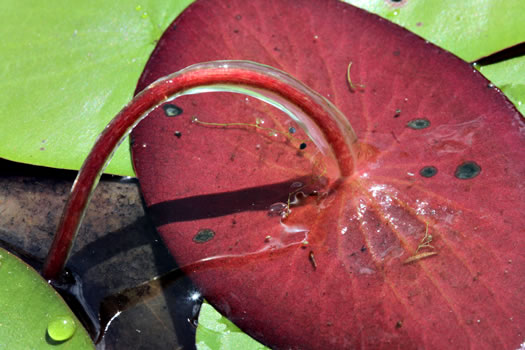Hovering over an image will enlarge it and point out features (works better on desktop than on mobile).
![]() A camera indicates there are pictures.
A camera indicates there are pictures.
![]() A speaker indicates that a botanical name is pronounced.
A speaker indicates that a botanical name is pronounced.
![]() A plus sign after a Latin name indicates that the species is further divided into varieties or subspecies.
A plus sign after a Latin name indicates that the species is further divided into varieties or subspecies.
Most habitat and range descriptions were obtained from Weakley's Flora.
Your search found 2 taxa in the family Cabombaceae, Water-shield family, as understood by PLANTS National Database.

![]() Common Name:
Fanwort, Carolina Fanwort
Common Name:
Fanwort, Carolina Fanwort
Weakley's Flora: (4/24/22) Cabomba caroliniana FAMILY: Cabombaceae
SYNONYMOUS WITH PLANTS National Database: Cabomba caroliniana FAMILY: Cabombaceae
SYNONYMOUS WITH Vascular Flora of the Carolinas (Radford, Ahles, & Bell, 1968): Cabomba caroliniana 075-01-001 FAMILY: Cabombaceae
Habitat: Millponds, lakes, slow-moving streams
Uncommon in Coastal Plain, rare in Piedmont
Native to the Carolinas & Georgia

![]() Common Name:
Water-shield, Purple Wen-dock
Common Name:
Water-shield, Purple Wen-dock
Weakley's Flora: (4/24/22) Brasenia schreberi FAMILY: Cabombaceae
SYNONYMOUS WITH PLANTS National Database: Brasenia schreberi FAMILY: Cabombaceae
SYNONYMOUS WITH Vascular Flora of the Carolinas (Radford, Ahles, & Bell, 1968): Brasenia schreberi 075-02-001 FAMILY: Cabombaceae
Habitat: Lakes, ponds, sluggish streams, floodplain oxbow ponds, beaver ponds
Common in Coastal Plain, uncommon in SC Piedmont (rare elsewhere in GA-NC-SC)
Native to the Carolinas & Georgia
Your search found 2 taxa. You are on page PAGE 1 out of 1 pages.

